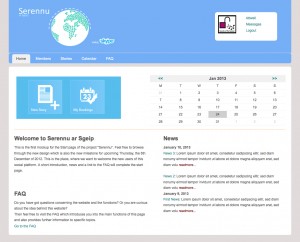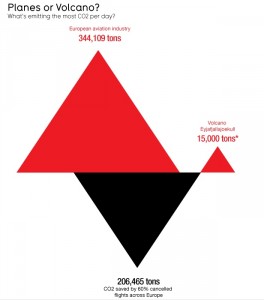Rozmawiałam na Skypie z Markiem Hylą, założycielem i moderatorem sieci społecznej SzkoleniaXXIwieku na temat inicjowania i rozwijania sieci społecznych oraz o nowym modelu biznesowym Ning. Oto zapis naszej rozmowy.
IB: Jest Pan znany w Polskiej spolecznosci e-learningowej. Czym się Pan zajmuje zawodowo? W jaki sposób porusza się Pan na codzień w sieci?
MH: Zawodowo jestem menedżerem w firmie szkoleniowej – osobą odpowiedzialną za nowoczesne technologie w procesie szkoleń. Z sieci korzystam zarówno zawodowo, jak i pozazawodowo. Zresztą jak się nad tym zastanowić, to oba te zastosowania się ze sobą łączą. Trudno oddzielić ostrą kreską zawodowe i pozazawodowe korzystanie z sieci. No bo na przykład czy pisanie bloga to zastosowanie zawodowe, czy pozazawodowe? Albo korzystanie z LinkedIn? Albo z GoldenLine?
IB: A dlaczego założył Pan sieć społeczną www.SzkoleniaXXIwieku.pl?
MH: Chyba z kilku powodów. Po pierwsze dlatego, że postawiłem sobie za cel promowanie i rozwój rynku e-learningowego w Polsce. Po drugie dlatego, iż widziałem bardzo pozytywny wpływ na to jak jestem postrzegany przez książkę, którą napisałem, tzn. “Przewodnik po e-learningu“. Fakt bycia autorem bardzo dobrze wpłynął na mój osobisty brand (markę) na rynku, a blog był znacznie ciekawszą formą nawiązania kontaktu z osobami, zainteresowanymi tematem nauczania przez sieć. Warto też zauważyć, że nie bez powodu zacząłem pisać bloga na środowisku Ning, które pozwala właśnie na tworzenie społeczności, a nie po prostu na pisanie tekstów do poczytania. Zależało mi na tym, aby skupić ludzi, móc nawiązać z nimi kontakt.
IB: Dla kogo sieć www.SzkoleniaXXIwieku.pl jest przeznaczona? Dla kogo szczególnie interesująca? Kim są uczestnicy tej sieci i co im daje bycie jej częcią?
MH: Spolecznosc ta jest przeznaczona dla dwóch grup. Pierwsza grupa jest małoliczna – jedynym jej członkiem jestem ja sam :). Mówiąc poważnie – blog jest dla mnie, tak jak pamiętnik, takim miejscem, gdzie mogę zapisać “sam dla siebie” rzeczy ciekawe, interesujące, ważne z perspektywy czasu, potrzebne do lepszego zrozumienia zmian jakie dzieją się na rynku. Grupa druga – to oczywiście wszyscy uczestnicy sieci. Udało mi się osiągnąć mój początkowy cel – członkami społeczności jest dość szeroki przekrój osób zarówno z firm, instytucji administracji publicznej, szkół i uczelni. Są tu i dyrektorzy, i specjaliści, i wykładowcy akademiccy, i studenci. Mam nadzieję (i to, póki co moim zdaniem, jest wartością dla uczestników sieci), że to, co wydaje mi się interesujące i co zapisuję “sam dla siebie” może być również interesujące dla innych. SzkoleniaXXIwieku mają jednak charakter dość jednostronnego przekazu. Mimo tego, że można bloga komentować, że jest forum, to jednak głównie piszę ja, a inni czytają. Cóż, taka jest specyfika większości blogów…
IB: Tak, znam ten „problem”. Jakie tematy więc Pan porusza?
MH: Inicjuję zagadnienie, które czasem trafiają na podatny grunt i budzą dyskusje. Poruszam tematy interesujące mnie, obejmujące przede wszystkim nowoczesne technologie szkoleniowe, styk człowiek – technologia, innowacje technologiczne, które mogą wpłynąć na nasze życie, na to w jaki sposób postrzegamy świat, w jaki sposób się uczymy (w bardzo szeroko pojętym tego słowa znaczeniu).
IB: Z pewnością chciałby Pan, aby więcej inicjatywy wykazywali uczestnicy, np. sami inicjowali nowe tematy lub więcej komentowali …
Myślę o tym, by spróbować w ciągu najbliższych miesięcy lepiej wykorzystać potencjał tych prawie 750 osób, które są członkami społeczności. Planuję, by celebrując 1000 osobę wprowadzić jakieś istotne zmiany w formule społeczności, np. bardziej otworzyć społeczność, złamać trochę formułę jednostronnej komunikacji na rzecz oddania trochę większego pola dla uczestników. Oczywiście wymagało to będzie znacznej pracy stymulacyjnej z mojej strony – ale postaram się tego dokonać. Zadowolony nie jestem, ale nie obrażam się na rzeczywistość. Wiem, że taka jest specyfika sieci, społecznościowych mediów. Wiem jednak, że w dużej liczbie osób, z którymi nawiązałem kontakt tkwi ogromny potencjał. Chcę ten potencjał spróbować wykorzystać. Dlatego zachęcam ludzi do uczestnictwa w społeczności, zostawiania swoich danych, tworzenia profili. Wiem jednocześnie, że działa to na moją niekorzyść jeżli chodzi o liczbę odwiedzin na blogu – utworzenie własnego profilu to jednak dla wielu osób pewna bariera …
IB: Jaka będzie Pana strategia? Jak chce Pan zaktywować członków społeczności?
MH: Jak to osiągnąć? Szczerze powiedziawszy jeszcze nie wiem. Muszę zaproponować coś ciekawego, coś co da wartość uczestnikom sieci. Może od czasu do czasu będziemy robić jakieś ciekawe badania ankietowe, albo będę wysyłać do wszystkich personalnego e-maila z prośbą o wsparcie inicjatywy. Może otworzę formułę społeczności tak, aby każdy jej uczestnik mógł pisać tutaj swojego bloga. Może otworzę grupy zainteresowań. To tylko kilka pomysłów…
IB: To ciekawie pomysły. A ma pan jakis model, wzór? Czy jest jakaś sieć społeczna, która jest dla Pana przykładem?
MH: Mam raczej kilka inspiracji. Ninga wybrałem zachęcony przez Elliotta Masie, który na tym środowisku otworzył “LearningTown“. Zobaczyłem, że można zbudować społeczność liczącą tysiące osób w skali światowej. Stamtąd też zaczerpnąłem np. pomysł grup zainteresowań. Śledzę rozwój różnych trendów w zakresie komunikacji społecznościowej. Na przykład zmiany na LinkedIn pokazują co się zmienia, na co stawiają znacznie bardziej doświadczeni w komunikacji gracze. Przykładem jest coraz bogatsze i lepsze poznawanie ludzi poprzez sieci społeczne. To już nie są tylko podstawowe dane, ale (jeżeli, oczywiście, jest taka wola członka społeczności) możliwość poznania jego gustów czytelniczych, planów podróży itp. Do tego dochodzi oczywiście, coraz doskonalszy profil doświadczeń zawodowych. Innymi słowy – sieci społeczne pozwalają na coraz lepsze zdefiniowanie siebie – z korzyścią zarówno dla siebie samego, np. poprzez lepsze szanse rekrutacyjne, oraz innych, np. poprzez sprawniejsze znalezienie osób, które mogą pomóc w realizacji zawodowych czy pozazawodowych celów.
IB: Moje następne pytanie odnosi się do Ning: Niedawno Ning ogłosił, że zamyka wszystkie swoje darmowe serwisy. Jak zareagowal Pan na ten nowy model biznesowy Ninga? W jaki sposób te zmiany wpłynęły na SzkoleniaXXIwieku?
MH: W zasadzie nie wpłynęło to w żaden sposób na SzkoleniaXXIwieku, gdyż od zawsze korzystam ze środowiska płatnego. Moja reakcja była ostrożnie pozytywna. Chciałbym wierzyć w to, że ruch Ning sprawi, iż serwis będzie lepszy, bogatszy w funkcje, sprawniej działający, z mniejszą liczbą błędów. Działa to, oczywiście, na niekorzyść osób, które założyły społeczności w modelu darmowym, niemniej mówi się coraz częściej o tym, że model wartościowych serwisów w Internecie za darmo zaczyna się kończyć. Nie mam nic przeciw płaceniu rozsądnych pieniądzy za wysoką wartość usług. Na razie nie odczułem zmian, chyba na to za wcześnie. Pojawiły się wprawdzie jakieś nowe funkcje, ale nie nastąpiła żadna rewolucja.
IB: Na koniec proszę jeszcze powiedziec tym osobom, które same chciałayy założyc podobną sieć społeczną. Co jest ważne, jeżeli chce się (a) zainicjować i (b) umożliwić rozwój własnej sieci społecznej?
MH: Moim zdaniem – trzeba chcieć to robić DLA SIEBIE. Jeżeli liczy się na to, że każdego dnia będziemy mieli setki czy tysiące odwiedzających, to szybko się zniechęcimy. Trzeba starać się być regularnym w tym, co się robi. Jeżeli podejmiemy decyzję, że piszemy co tydzień, to róbmy to co tydzień. Jeżeli mamy to robić co trzy dni, to utrzymujmy ten rytm. Ja staram się każdego miesiąca opublikować kilkanaście wpisów na blogu. Trzeba określić i trzymać styl bloga. Tworzyć go tak, aby ten styl był spójny. Trzeba też rugować z sieci osoby, które nie są gotowe podporządkować się takiemu stylowi. Ja np. byłem zmuszony usunąć profil osoby, która miała nieodpowiednie dla stylu naszej sieci zdjęcie. Mam też praktykę witać indywidualną wiadomością każdego nowego członka społeczności. Raz na kilka dni przeglądam listę nowych członków i wysyłam takie powitanie. Poświęcam na te wszystkie zadania pewnie 2 godzin tygodniowo. To może wydawać się dużo, ale tak czy siak – pewnie połowę tego czasu i tak poświęcałbym na szukanie, czytanie raportów, analizy itp. To co robię dodatkowo to dzielenie się swoimi przemyśleniami z innymi. Nie robię tego czysto altruistycznie. Poprzez moje działania w sieci buduję moja osobistą markę. Moja marka pomaga mi w biznesie, określa mnie w sieci, buduje znacznie doskonalszy profil niż wszystkie LinkdIny razem wzięte.
IB: Dziekuję bardzo za rozmowe. Bardzo chętnie porozmawiam z Panem następnym razem na temat budowania własnej marki w sieci. To też bardzo ciekawy temat …


